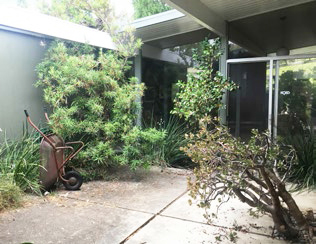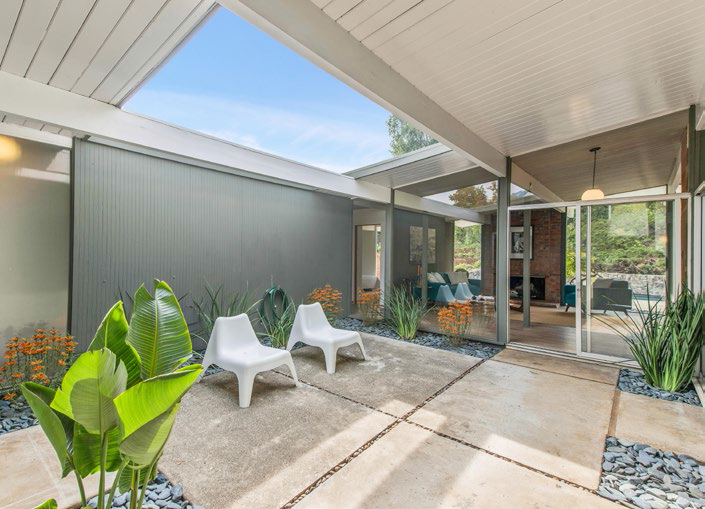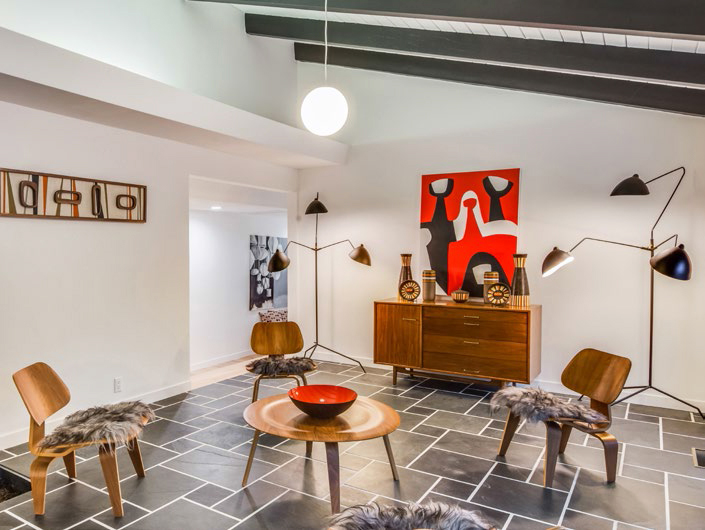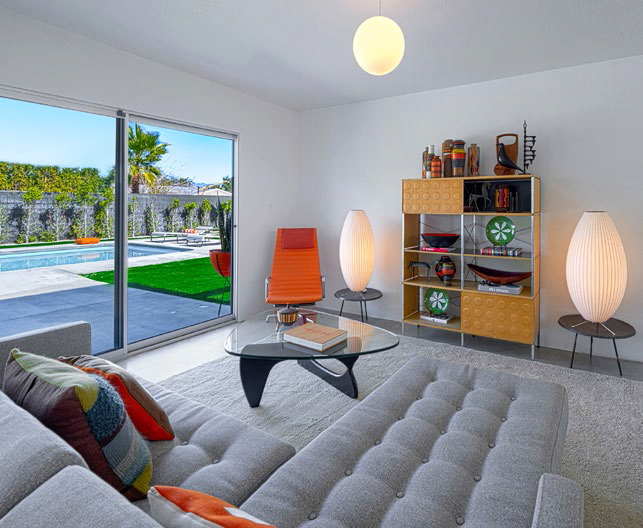Staged for Living - Page 3
 |
 |
|
|
 |
 |
|
|
Layered lighting
The layering of interior lighting, whether used specifically for entertaining or just for everyday activities, is often overlooked, but it is essential for enhancing the ambiance and functionality of a mid-century modern home.
"Having one bright overhead light can cast unattractive shadows or images that are generally harsh and not particularly flattering," observes Padgett.
She suggests bringing in more eye-level fixtures, such as table lamps or unobtrusive floor lamps, depending on your floor plan, and placing them throughout a room. "The overall concept is layering your light sources, as opposed to having one primary source, and bringing your light down to user level."
Does the light-layering concept mean you should discard your beloved halogen tracks? Certainly not. Regardless of whether they've been replaced with LEDs or not (LEDs being more energy efficient and California Title 24 compliant), track lighting remains both functional and flexible, especially when enhanced with dimmers.
Individual track lights can also be moved, redirected, or temporarily removed, and then augmented by eye-level lamps to add warmth and eliminate unwanted shadows from your guests' faces.
Stager Camila Baum is fond of the original Eichler globe lamps, but suggests augmenting them with bubble lamps since the globes aren't very bright.
"I love the classic bubble lamps," she says. They come in tabletop and floor sizes, in addition to the iconic George Nelson hanging lamps. "I think those [bubbles] are best for their simplicity. They illuminate wonderfully and work well with CFLs [compact fluorescent lamps, oftentimes used to replace traditional incandescent light bulbs]."
Floating furniture
The living room is generally the most important room in the house, especially when hosting guests, and it is often the main entry space of your home. This is an excellent room for illustrating the concept of floating the furniture—something that modernist furnishings were designed to do.
The principle of floating can make a world of difference in opening up a space. As South Bay interior designer Lucille Glessner, of Lucile Glessner Design, notes, "[In your living room] you want pieces that are somewhat floating in the space. It means that furniture is not sitting directly on the floor, but has legs—often slanted—allowing the floor to show through." If you look closely at some of the most renowned mid-century modern furnishings, you'll see how effective this subtlety is.
The floating effect can be further enhanced by paying attention to your furniture's scale (size relative to the space) and placement. For example, Glessner contends, "It's often better to have a smaller sofa and a floating lounge chair than filling up the space with an oversized sofa or sectional."
Grouping smaller pieces together can also be functionally valuable by creating multi-purpose areas—facilitating socializing, conversation, and collaboration—within your home.
Another principle of floating involves keeping furniture away from the walls and windows, when feasible. For example, moving sofas and chairs out from the wall by two to three feet makes the room feel more open and spacious, frees up valuable wall space for art, and can also create pathways to walk around.
Designers also caution against the natural urge to spread furniture pieces throughout an entire room. It's not necessary to fill every corner; instead, creating groupings for seating and conversation within the space is very effective.




